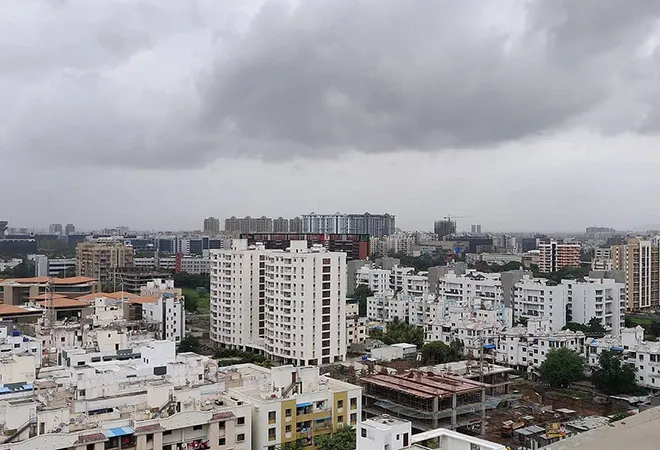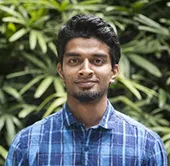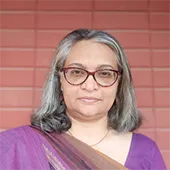
The concept of smart cities in urban planning first emerged in 1990 along with the World Wide Web. The notion of smart cities has its roots in urban planning whereas the internet emerged from the need to document, store, and exchange all human knowledge and information. Despite distinct purposes, both smart cities and internet seem to share a 100-year history of co-evolution which goes back to some of the early concepts brought forth by “the father of modern town planning”, Patrick Geddes. This article attempts to explore not just how the internet is integral to the development of smart cities but also how urban planning, over a long period of time, has influenced the idea of the internet.
Background
Patrick Geddes, a Scottish biologist, sociologist, geographer, and pioneering town planner, was mostly known for his works in urban planning and sociology. The emerging numerous studies on sociology in the 1880s motivated Geddes to collect, classify, and synthesise modern knowledge. He founded the “Outlook Tower”, which was a museum dedicated to bringing together different scientific studies and educating the public through visual and artistic symbolism. The tower had different storeys and was designed in a sequence to lead the visitor from the local to the regional, to the national and the global.
The Mundaneum was primarily considered to be a networked knowledge-based global society, consisting of material and virtual components, it was the driving force for reorganising the documentation of all knowledge in a planned manner, integrating technical and epistemic strategies.
The Outlook tower inspired Paul Otlet, a well-known figure in the history of information science, to create a universal network of documentation. The network Otlet imagined was a huge, centralised database where all knowledge would be assembled, processed, and distributed. He called this huge centre, the Mundaneum. Although, the Mundaneum was primarily considered to be a networked knowledge-based global society, consisting of material and virtual components, it was the driving force for reorganising the documentation of all knowledge in a planned manner, integrating technical and epistemic strategies. The Mundaneum was not only a project for a real building that combined a world museum, library, archive, and university but also an architectural metaphor of knowledge organisation and dissemination on a global level. Therefore, it is also considered to be the first search engine of the world.
The World Wide Web, proposed by Tim Berners-Lee in 1990, has several common characteristics with Otlet’s ideas of universal documentation of knowledge and the Mundaneum. Although we do not see a direct connection between Tim Berners Lee and Patrick Geddes, the earliest forms of the idea of universal information storage and retrieval has been developed by thinkers like Otlet and Geddes. Otlet also borrowed the term ‘thinking machines’ from Geddes that describes that all the people in the world can participate actively in this universal knowledge documentation. The term ‘thinking machine’ was a central idea in Geddes’s work in urban planning and Otlet’s work in the Mundaneum. The fact that the Outlook tower inspired Otlet’s work on the Mundaneum leading to the eventual implementation of the Web by Tim Berners-Lee shows the mutual relationship between the evolution of information systems and human settlements.
With increasing technological innovations such as the internet, cloud technology, open data, virtual reality etc., urban planners can not only utilise them to increase their productivity but also citizens can now get involved in the urban planning process.
Smart cities and the cyberspace
The internet, which emerged from the idea of documenting all knowledge in the world, has changed the way information is generated and exchanged and is increasingly leveraged by smart cities to crowdsource data, consider public opinions, improve governance, and make effective decisions for its people. Human participation in the planning and design of urban spaces was an important factor for Geddes. Information presented in a synoptic view with other relevant information empower citizens to identify opportunities and self-organise, building adaptive capacity to evolve. With increasing technological innovations such as the internet, cloud technology, open data, virtual reality etc., urban planners can not only utilise them to increase their productivity but also citizens can now get involved in the urban planning process.
The definition of smart cities varies from country to country due to many factors. The concept of smart city in India would be entirely different from a smart city of a different geographical location. While the smart city initiatives in the West focus more on efficiency, sustainability, and security, the smart city policies in India tend to focus more on driving modernisation and developing infrastructure. However, a consensus on what makes a city smart is intelligent IoT solutions that optimises infrastructure and governance to better engage citizens in the management of services. In Singapore, one of the leading countries in smart city initiatives, almost 95 percent homes have access to the internet and open sourcing of information enable the citizens and private sector to leverage data for personal and business reasons.
The rising poverty rates in India coupled with the limited access to basic infrastructure and services like sanitation, electricity, and water facilities has obstructed the implementation of smart cities.
The smart city mission launched in India in 2015, however, has faced a lot of criticism due to poor implementation and lack of clarity in its objectives. The idea of smart cities is relatively new in the country and the adequate technical skills to achieve the intended results is lacking. The rising poverty rates in India coupled with the limited access to basic infrastructure and services like sanitation, electricity, and water facilities has obstructed the implementation of smart cities. Moreover, Internet penetration in India is only at 47 percent. Although the internet is penetrating Indian societies at a much higher level than previous years, it is lower than other Asian countries.
The inconsistencies in the internet availability and access to information not only in India but also across the globe has caused the digital divide. It also has led to disinformation practices through social media which has negative ramifications for the society. As devices become increasingly connected with each other, data privacy issues become a huge concern along with increased probability of cyber attacks. At the same time, short sighted planning policies create exclusion and fail to empower the poor through the productive use of technology leading to digital destitution. As we face unprecedented challenges that come along with technological innovations, it is imperative that we go back to the founding principles brought forth by early thinkers such as Patrick Geddes and Paul Otlet.
With powerful technologies, today’s smart cities have the potential to fulfil both Geddes’s and Otlet’s dream of providing the citizen a local experience in relationship with the world at large and connecting all the world knowledge through an interconnected network respectively. Geddes’s emphasis on localised approaches to urban planning is crucial to the vision of smart cities. A high degree of collaboration amongst resident and communities is key for urban planning and digital infrastructure to work in unison.
The views expressed above belong to the author(s). ORF research and analyses now available on Telegram! Click here to access our curated content — blogs, longforms and interviews.




 PREV
PREV



